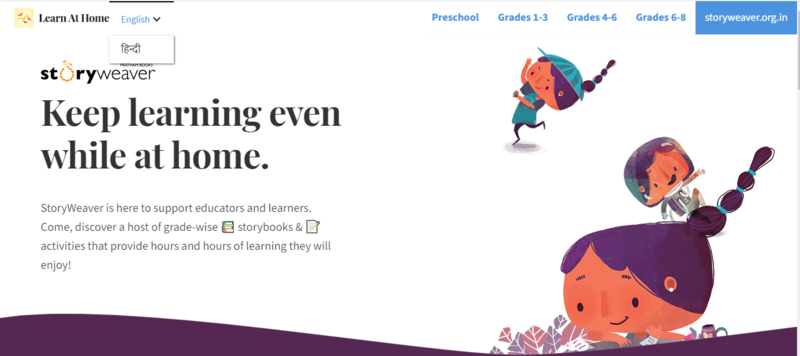Pratham Books wins 2020 Library of Congress Literacy Award
Posted by Pallavi Kamath on September 11, 2020We are thrilled to announce that Pratham Books has won the prestigious 2020 Library of Congress Literacy Award, recognizing our responsiveness to the unique needs faced by children during the current unprecedented times, and our efforts over the past few months to spread the joy of reading to children everywhere through the COVID-19 pandemic.
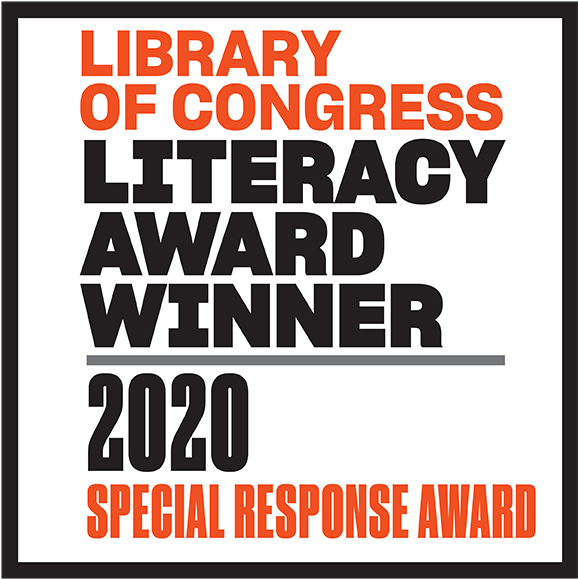
The Literacy Awards, originated by David M. Rubenstein in 2013, honor organizations doing exemplary, innovative and replicable work. Collectively, all of these awards spotlight the great efforts underway to promote literacy and respond to the needs of our time. We are honoured to be one of five global winners this year, and the only organization from India to win the award.
As schools around the world closed indefinitely, and demand surged during the pandemic for digital learning resources, it became increasingly important to find new and innovative ways to keep children engaged and curious. Pratham Books created programs that could be used in low-resource environments, including launching the StoryWeaver Learn at Home programme in Hindi and English, adding to the repository of thematic reading lists and audio-visual books in multiple languages on StoryWeaver, and a phone-based dial-a-story programme called Missed Call Do, Kahaani Suno! that allowed a child to locate a story in a chosen language by dialing a toll-free number.
In addition, in just four months, translators on StoryWeaver translated 3,000 books into 28 new languages, including books about the coronavirus, health and hygiene and social and emotional issues. UNESCO and the World Bank have listed StoryWeaver as a resource for the homebound child during the pandemic.
We are grateful to our wonderful network for helping us share the joy of reading during these challenging times, and to the Library of Congress for this recognition.
comments (4)StoryWeaver turns three!
Posted by Remya Padmadas on September 08, 2018September 8th holds a special place in our hearts. For starters, it’s International Literacy Day, a day that highlight the importance of literacy to individuals, communities and societies. September 8th also witnesses thousands of volunteers across the country read stories to children as part of Pratham Books’ One Day, One Story. And oh... it also happens to be StoryWeaver’s birthday!

(Image from 'Springloaded' published by BookDash. Written by Sam Wilson and Chenél Ferreira Illustrated by Thea Nicole de Klerk)
Today, we turn three! For such a young platform, we’ve taken some pretty big steps over the last three years. We’ve grown from 800 stories in 24 languages to over 9000 stories in 120 languages. We have a wonderful, collaborative community of users from over 190 countries reading, sharing, writing and translating stories on StoryWeaver and committed partners working hand-in-hand with us to take the joy of reading to more children.
In the coming week, we’ll be celebrating three years of wonderful stories, three years of amazing on ground partners, three years of fabulous CC publishers, language champions and community members. We do hope you’ll tune in to read and watch how they’ve helped us take the joy of reading to more children across the world.
To each and everyone of you who have helped us take stories to places stories couldn’t go before: THANK YOU! Our achievements are really yours. Each and every thing you do on and with StoryWeaver, no matter how big or small, helps us move a little closer to realising the dream of ‘a book in every child’s hand.’
And lastly, to all the children out there: keep reading. We promise to always have something for you to read.
The Year is Ending, But Let’s Continue the Joy of Reading With Our Year End Wrap
Posted by Shristhi Patra on December 27, 2022StoryWeaver is celebrating this festive season by presenting to you our year end wrap. Come, let us soak in this holiday season by reading our most loved stories from 2022. This festive season, let us remember the joys of the year gone by and greet the new year with hope, and renewed enthusiasm. Here is a list of fun and sparkling stories to introduce to the child.
1. A Bunch of Flowers: What is happening to Peri’s mother? His mother is always sleeping, her room is always dark like a thick forest of tall trees. In this wordless book for emergent readers, Peri thinks of ways to bring the outdoors and sunshine back into their home and into his mother’s eyes. Immerse yourself in this lovely picture book on hope, support, and understanding written by Liwliwa Malabed, illustrated by Saumya Oberoi, and published by Singapore Book Council here.
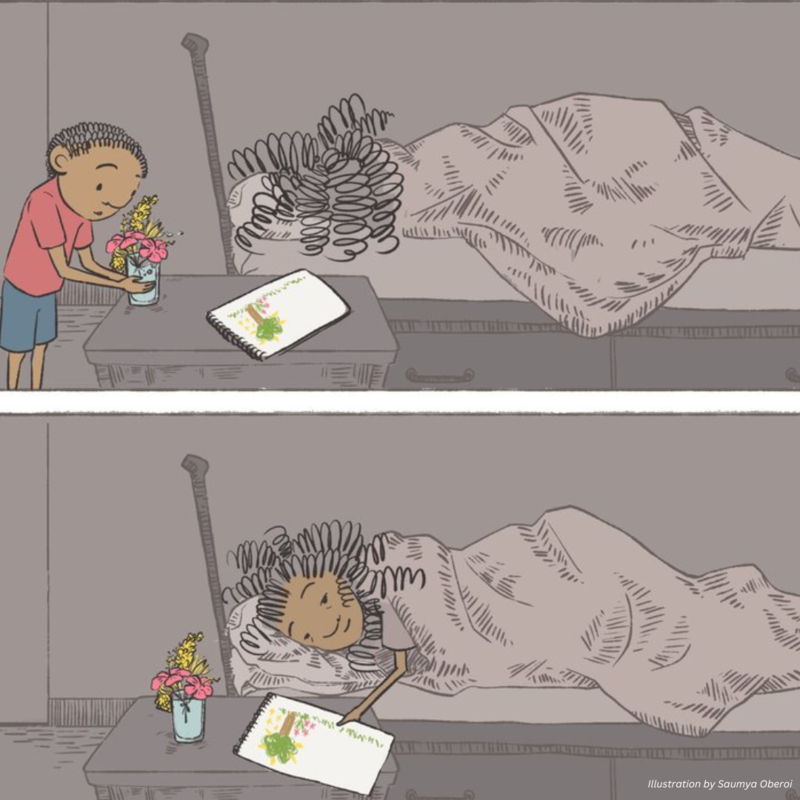
2. How Many?: Crawling snails, fluttering butterflies, pigs in the mud. This book has so many animals, and more keep joining in. Can you count them all? Count your way through complex maths concepts with this richly illustrated book written by Sudeshna Shome Ghosh, illustrated by Sayan Mukherjee, and published by Pratham Books here.
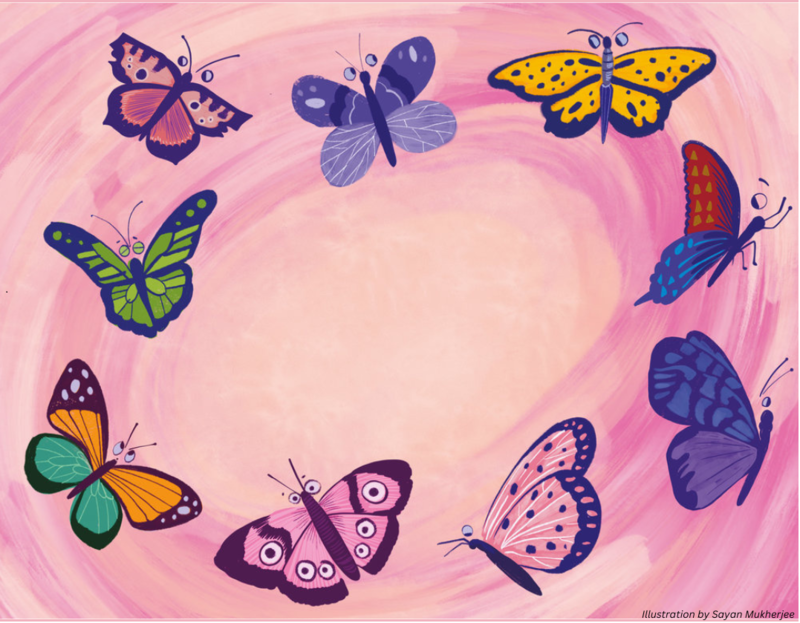
3. Brave Bora: Going to the doctor can be scary! Can Bora overcome his fears, with a little help from Baba and Jojo? Explore your own courage through this beautiful story on love and support written by Edna Gicovi, illustrated by Ellen Heydenrych, and published by Book Dash here.
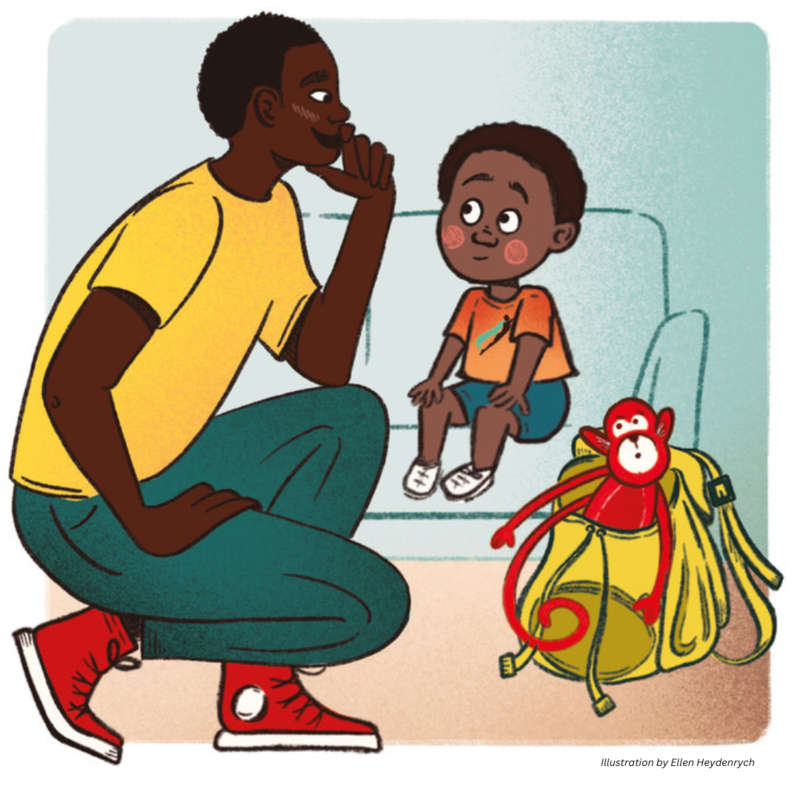
4. Haru: Meet Haru, who loves to eat, run and play. Even though there are nights when it’s hard to find a warm place to sleep, or days when there isn’t enough food to eat, Haru is always certain that tomorrow will be better. After all, as long as there is love and joy, it’s not a bad life! Discover the joy in the little things in life through this book written and illustrated by Manjari Chakravarti, and published by Pratham Books here.
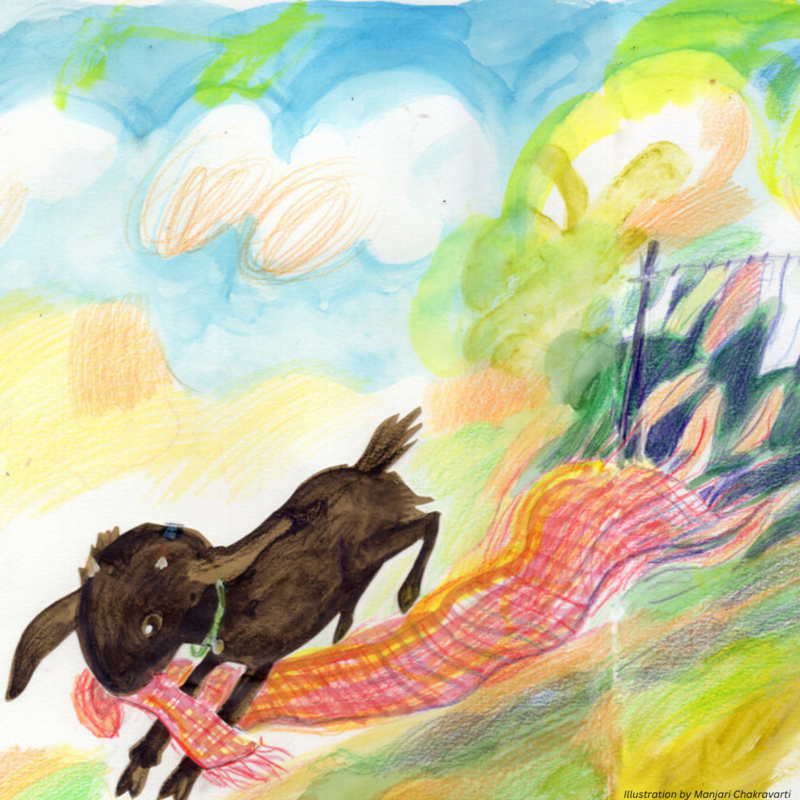
5. At Home: Ammini misses school, and her brother Unni misses his aunt. Both of them miss playing in the park. But everyone has to stay indoors. Maybe they can go out for a walk today? Ammini hopes so. A day in the life of two children in a time of lockdowns and social distancing. Join Ammini on her journey as she tries her best to keep hopeful and carry on during tough times written by Shweta Ganesh Kumar, illustrated by Annand Menon, and published by Pratham Books here.
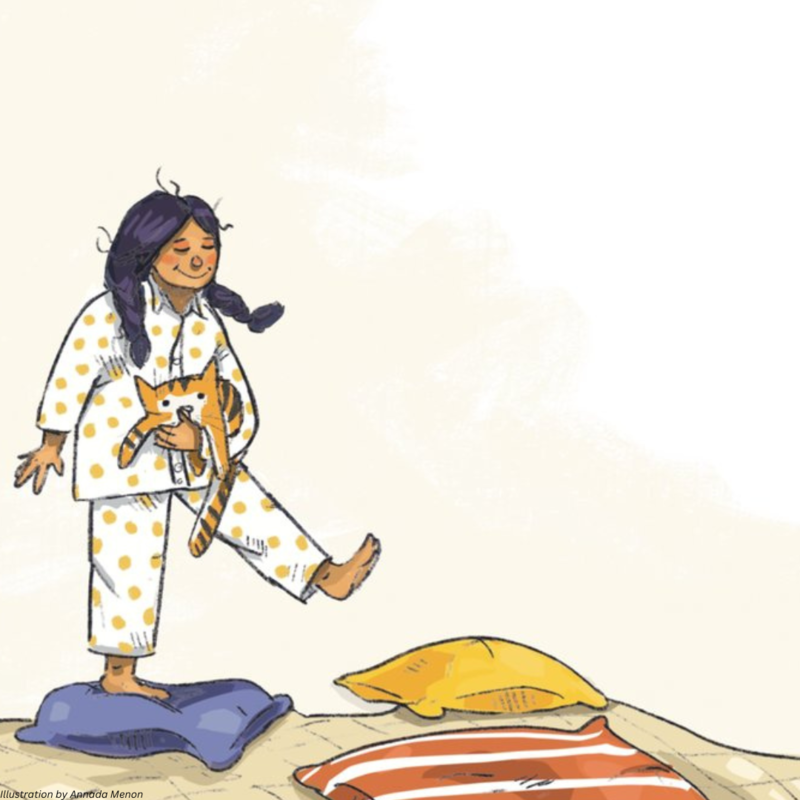
As we look back, this past year has been about recovering from the impact of the Covid-19 pandemic with the realisation that we must continue our efforts to make the joy of reading fun, free, and accessible to all. Help us continue our journey of spreading the cheer of reading. If you like our work, consider donating to StoryWeaver. No amount is too small, and we appreciate every single contribution.
To make your contribution, click on: http://bit.ly/3PHTht5
comment (1)